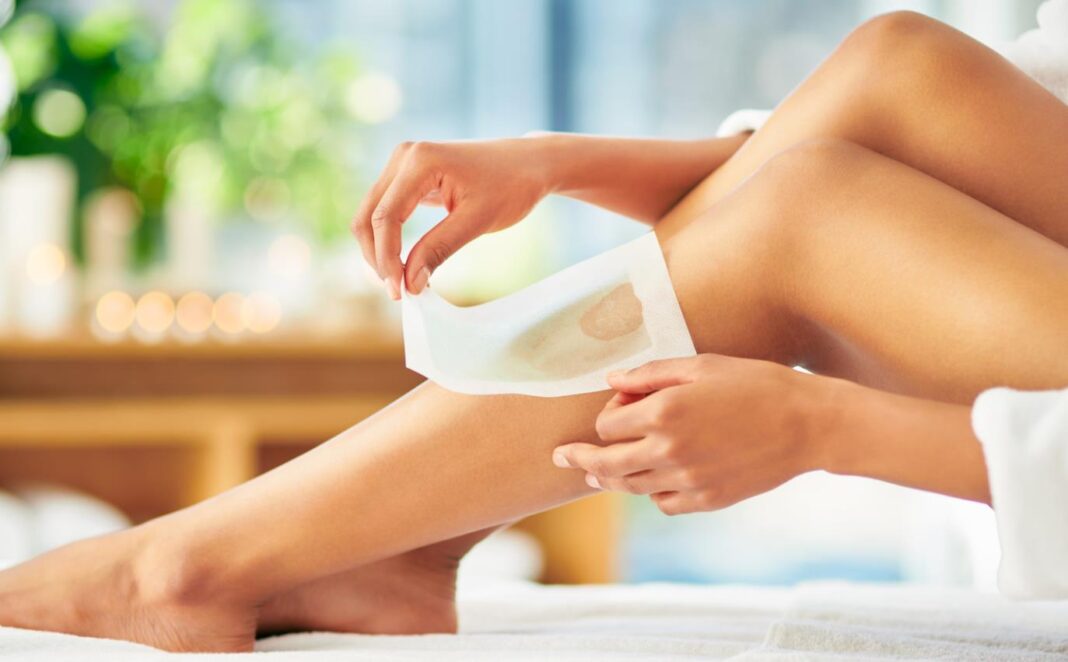Waxing is one of the most conventional methods of hair removal for centuries. It did not lose its importance even in the present time when so many advanced techniques of hair removal have been introduced.
Women trust their bodies and face with waxing as it gives them the liberty to enjoy hairless skin for a month. However, the pain associated with waxing makes women fear the day of their hair removal session.
So, they are left with two choices, either to change their hair removal method to a nearly painless one or take the pain every month. But wait! We have a third option for you. It is nearly painless waxing at home using some tips. So, in this article, let us talk about nearly painless wax hair removal.
How Does Waxing Hair Removal Work?
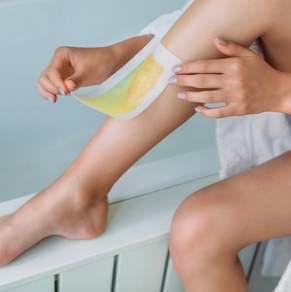 Waxing hair removal works by eradicating unwanted hair from its roots. It does so by attaching to the hair strands firmly and then removing it from the follicles when the strip is detached from the skin. The stickiness of wax allows it to adhere to the hair strongly without binding with the skin.
Waxing hair removal works by eradicating unwanted hair from its roots. It does so by attaching to the hair strands firmly and then removing it from the follicles when the strip is detached from the skin. The stickiness of wax allows it to adhere to the hair strongly without binding with the skin.
So, it removes unwanted hair and also weakens the hair follicles gradually. So, it leads to slowed hair regrowth and thinner hair eruption every time you wax. Moreover, it exfoliates the skin and makes it smooth and shiny. This is exactly the reason why women have not yet given up on waxing.
Is Waxing Painful? If Yes, Why?
If you have ever waxed, we are sure you are aware of the answer. If you never did it, be mentally prepared because yes, waxing is painful. But not as painful as epilation, of course.
The hair that grows out of the roots has a continuous blood and nerve supply. So, when you pull out the hair, you are also pulling the nerves just under the hair. The stimulation of pain nerve endings causes pain. In addition, waxing itself is associated with pain, tenderness, and skin swelling because of the pulling of the skin as you rip the waxing strip off.
What is the Intensity of Pain in Waxing Hair Removal?
 There is no hard and set rule of how painful waxing is because pain threshold and tolerance are not the same for everyone. While some people just flinch at getting each section of hair waxed, others cannot stop screaming because of the pain and psychological effects.
There is no hard and set rule of how painful waxing is because pain threshold and tolerance are not the same for everyone. While some people just flinch at getting each section of hair waxed, others cannot stop screaming because of the pain and psychological effects.
Moreover, the pain intensity depends on the area where the wax is being done. For example, waxing face and bikini lines is much more painful as compared to waxing arms. Also, men feel more pain in waxing because of their coarse thick hair.
How to Do Wax Without Pain at Home?
The following measures mentioned below can help you get a nearly painless wax hair removal at home.
1. Keep Your Skin and Body in a Healthy Condition
If your skin and body are healthy, you are likely to feel less pain. To maintain your skin condition for waxing, eat foods rich in antioxidants, increase the intake of water, exercise regularly, sleep well, and avoid excess intake of coffee, alcohol, and unhealthy meals. Additionally, quit smoking as it is harmful to the skin and can aggravate the pain caused by waxing.
2. Maintain an Adequate Level of Skin Hydration
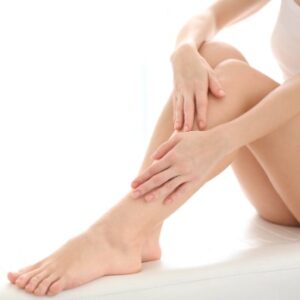 Your skin must not be too oily or too dry for a nearly painless waxing at home. Oily skin makes it difficult for the wax to adhere and dry skin gets irritated easily. So, moisturize your skin well before and after waxing hair removal. But make sure your skin has no remnants of the body lotion during the waxing session.
Your skin must not be too oily or too dry for a nearly painless waxing at home. Oily skin makes it difficult for the wax to adhere and dry skin gets irritated easily. So, moisturize your skin well before and after waxing hair removal. But make sure your skin has no remnants of the body lotion during the waxing session.
Also, your skin should be dry and not sweating for waxing to go with less pain and effort. So, you can use baby powder to get a good texture of the skin for waxing.
3. Get a Good Waxing Hair Removal Kit
A good waxing hair removal kit is a must-have for a comfortable waxing experience because the kit determines what type of wax is used, how efficient it is, how much force is required to pull the hair off, and ultimately how much pain it gives you. Some of the best waxing kits are mentioned in the At-Home waxing kit for hair removal.
4. Use Suitable Wax for Different Areas of the Body
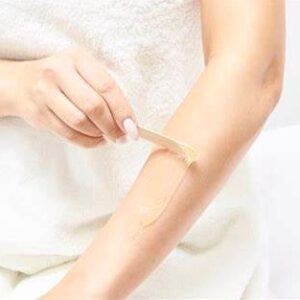 Mainly two types of wax are used; hard wax and soft wax. Soft wax works well for areas with less sensitivity to pain like arms and legs. However, hard wax should be your go-to option for sensitive and delicate areas like bikini lines and eyebrows.
Mainly two types of wax are used; hard wax and soft wax. Soft wax works well for areas with less sensitivity to pain like arms and legs. However, hard wax should be your go-to option for sensitive and delicate areas like bikini lines and eyebrows.
It is because hard wax does not adhere to the skin, is easy to remove, and is relatively less painful as compared to soft wax.
5. Take Painkillers
The best bet to reduce the pain caused by waxing can be painkillers. Both oral and topical pain-reducing drugs can be used. Oral medications like aspirin, paracetamol, and ibuprofen prevent stimulation of pain nerve endings, and topical gels like lidocaine numb the area to be treated.
6. Wear Lose Clothes
 If your skin is already irritated by continuous friction from the tight clothes, the pain caused by waxing hair removal is exaggerated. Also, such clothes make skin sweat by blocking ventilation and adding to the pain by obstructing hair follicles.
If your skin is already irritated by continuous friction from the tight clothes, the pain caused by waxing hair removal is exaggerated. Also, such clothes make skin sweat by blocking ventilation and adding to the pain by obstructing hair follicles.
So, wear loose clothes to let your skin breathe, sweat evaporate, and nerve endings relax.
7. Use the Right Technique of Waxing
A good technique of waxing can help in nearly painless wax hair removal. All you have to do is apply a thin layer of wax in the direction of hair growth, keep the skin taut, and rip the waxing strip off in the opposite direction. Moreover, do not wax a single section more than 2 times as it can cause micro-tears in the skin and increase the intensity of the pain.
8. Grow the Hair to the Appropriate Length
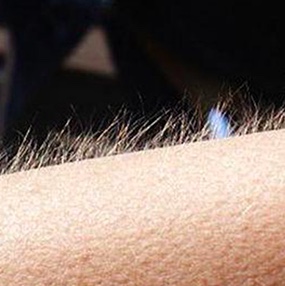 You should not be waxing on extremely short hair that does not adhere to the wax making you repeat the treatment over and over again resulting in pain. Similarly, hair must not be too long that it breaks halfway through its length adding to the pain.
You should not be waxing on extremely short hair that does not adhere to the wax making you repeat the treatment over and over again resulting in pain. Similarly, hair must not be too long that it breaks halfway through its length adding to the pain.
¼ to ½ of an inch of hair growth can help in nearly painless wax hair removal.
9. Work Quickly
When you are waxing, do not spend more time than needed thinking about if you should do it or not and if you should pull it in one go or take it slow. Just apply the wax and remove it in one go. Then move to the next section. It will help you get done with the hair removal quickly and reduce the time you spend tolerating the pain.
10. Deep Breaths
 Deep breaths can help in reducing the psychological effects of the pain in waxing. When the wax is applied and pulled off, take deep breaths consciously focusing on the movement of your abdomen and chest instead of holding the breath. It will help in distracting you from the pain and relaxing.
Deep breaths can help in reducing the psychological effects of the pain in waxing. When the wax is applied and pulled off, take deep breaths consciously focusing on the movement of your abdomen and chest instead of holding the breath. It will help in distracting you from the pain and relaxing.
11. Keep Waxing
The nerve endings become used to the pain and the sensitivity of pain is greatly reduced if you keep repeating the procedure. Also, the hair becomes thinner, and your pain tolerance increases. So, do not give up on waxing after trying it a few times. Rather keep going until your body becomes insensitive to the pain of the unwanted hair being pulled out.
12. Do Pre and Post Treatment Skincare
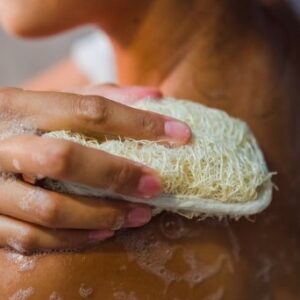 Pre-treatment preparation of the skin can reduce the pain caused by waxing significantly. To prepare the skin, exfoliate it well and take a warm water bath before waxing. It will open the pores and make hair removal easy.
Pre-treatment preparation of the skin can reduce the pain caused by waxing significantly. To prepare the skin, exfoliate it well and take a warm water bath before waxing. It will open the pores and make hair removal easy.
After waxing, wash your skin with cold water and moisturize it well to avoid bumps and skin redness.
13. Get Wax at a Professional Set-Up
Waxing might get too painful when you are doing it on your own because you cannot time it right, move quickly, or are not skillful enough. So, simply book a session at some professional salon. The experts are skilled and can treat your unwanted hair according to your pain sensitivity.
14. Regulate the Temperature of the Wax
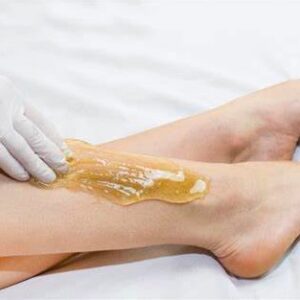 An adequate temperature of the wax is essential for nearly painless waxing at home. Hot wax has the potential to burn the skin and cause burning pain while cold wax is not effective enough to remove all hair strands in one go adding to the pain.
An adequate temperature of the wax is essential for nearly painless waxing at home. Hot wax has the potential to burn the skin and cause burning pain while cold wax is not effective enough to remove all hair strands in one go adding to the pain.
So, take a digital waxing kit and ensure that the temperature is suitable for your skin as you remove hair with the wax.
15. No waxing in Periods
Immediately before the periods and during your monthly cycle, the body is more sensitive, more prone to pain, and easily irritable. So, avoid waxing during this time and schedule your sessions a few days before or immediately after the periods to have a less painful waxing experience.
What Other Method of Hair Removal can be Tried for Nearly painless Hair Removal?
If you want to give up on waxing altogether without getting too much into methods of reducing pain, the following hair removal methods are for you.
Shaving
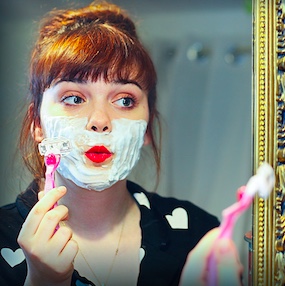 Shaving is a fast and entirely nearly painless alternative to waxing. However, it lasts for a short time. Although it might cause skin redness or razor cuts, such side effects can be easily avoided by using the right technique and equipment for shaving.
Shaving is a fast and entirely nearly painless alternative to waxing. However, it lasts for a short time. Although it might cause skin redness or razor cuts, such side effects can be easily avoided by using the right technique and equipment for shaving.
You can see how shaving compares with waxing in Waxing vs. Shaving.
Hair Removal Creams
Hair removal creams are yet another nearly painless substitute for waxing. It is also a quick and effortless method of hair removal. However, you always have to be on your toes while timing your depilatory cream hair removal session as leaving the cream on for a long time might cause severe chemical reactions and burns.
You can find out which of the two is more suitable for you in Hair removal creams vs. Waxing.
IPL Hair Removal
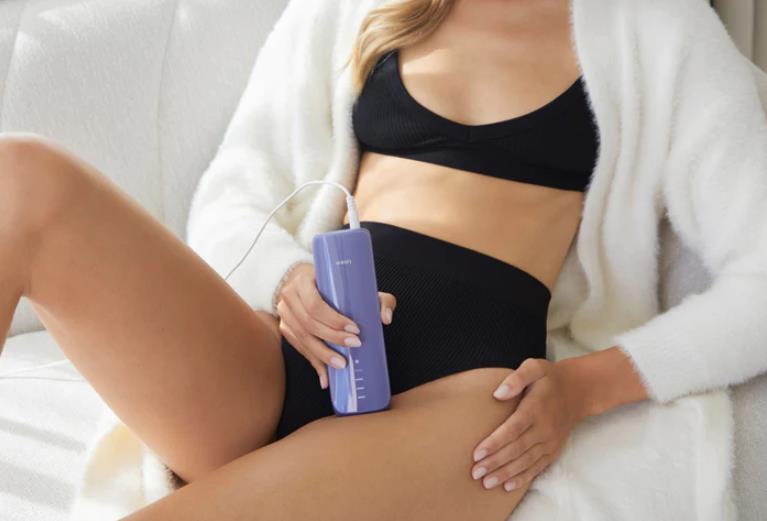 The last alternative to waxing is considered the best one as in addition to being nearly painless, it is skin-friendly, has an economical cost, and its results last for a longer time. This method is IPL hair removal. As long as you buy a high-quality device, you can prevent aftereffects of IPL hair removal like redness and swelling. One of the devices that you won’t regret buying is the Ulike Sapphire Air3 Hair Removal Handset.
The last alternative to waxing is considered the best one as in addition to being nearly painless, it is skin-friendly, has an economical cost, and its results last for a longer time. This method is IPL hair removal. As long as you buy a high-quality device, you can prevent aftereffects of IPL hair removal like redness and swelling. One of the devices that you won’t regret buying is the Ulike Sapphire Air3 Hair Removal Handset.
Furthermore, give Waxing vs IPL hair removal a read to finally decide which method can become your ultimate one.
Conclusion
Waxing hair removal can be done without you having to prepare yourself mentally for the pain. As long as you follow an appropriate protocol for waxing, pain can be greatly reduced and your tolerance can also be improved gradually.
Ultimately, you stop fearing your waxing sessions. So, in this article, we have talked about the measures you can take for nearly painless waxing at home. These include skin preparation for waxing, using a good waxing kit, expertise in the waxing technique, stopping waxing on irritated skin, taking deep breaths, and removing hair quickly.

 By Mariela
By Mariela
